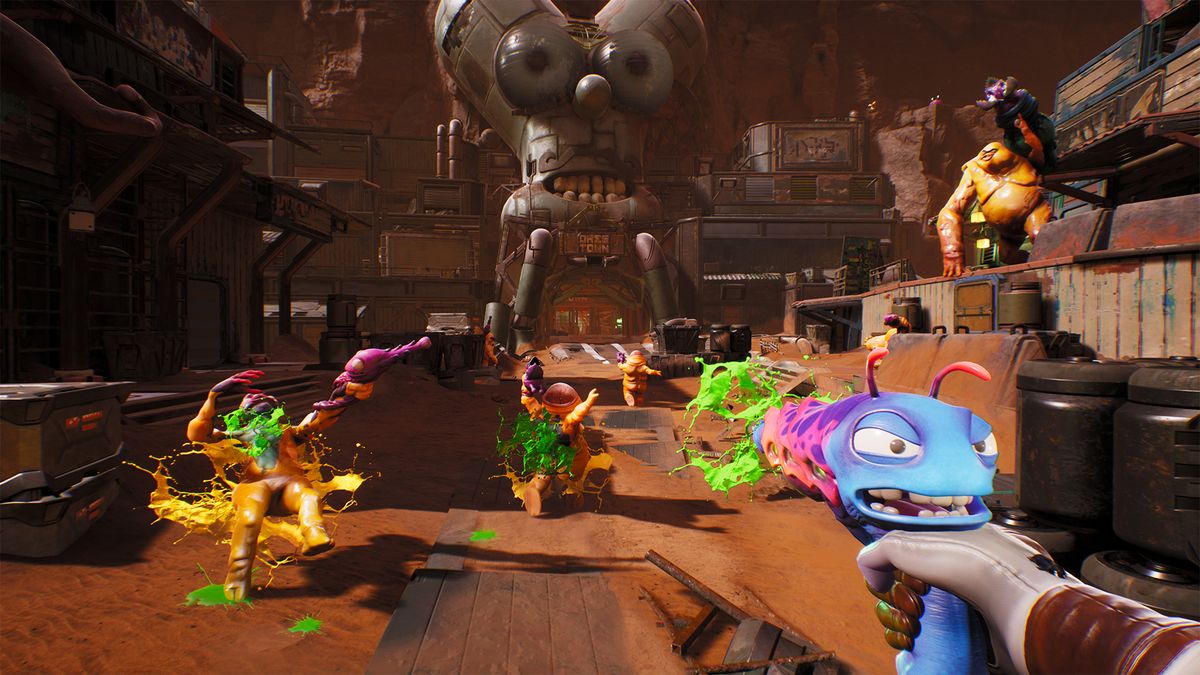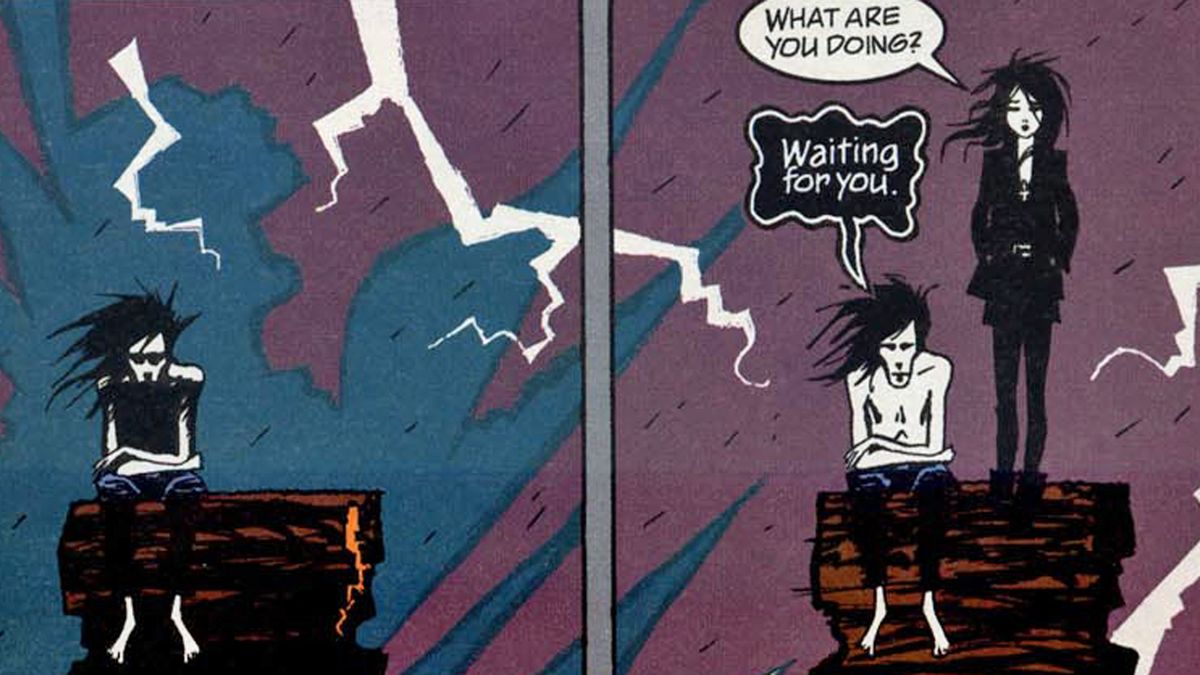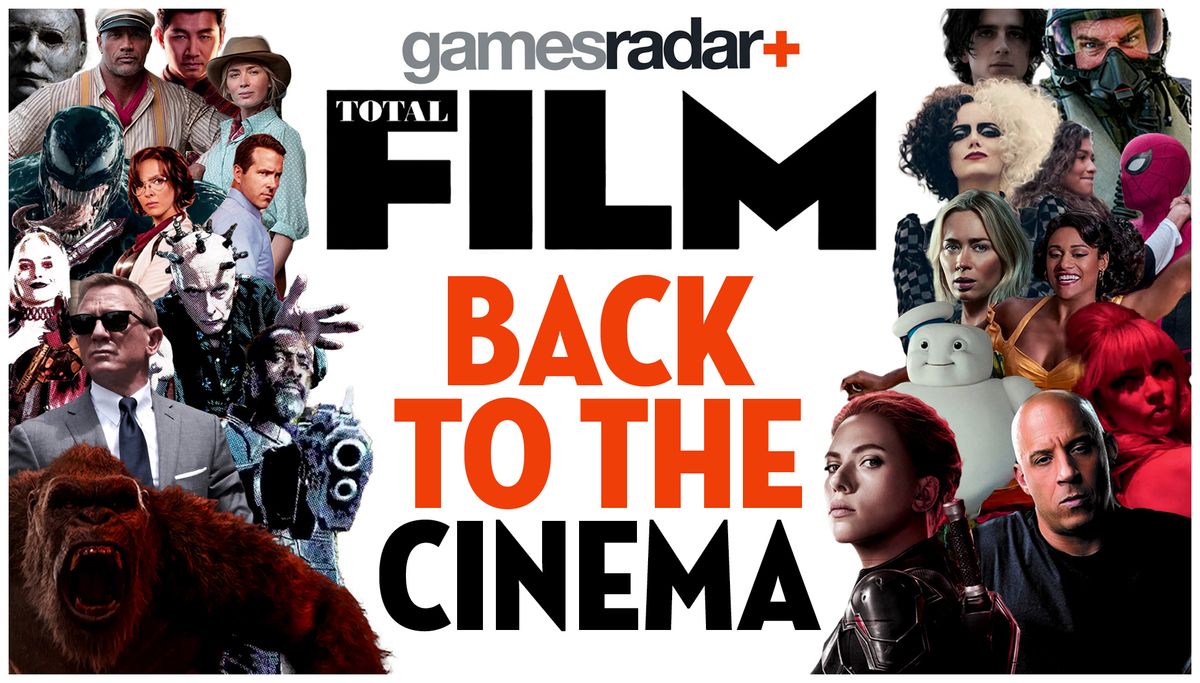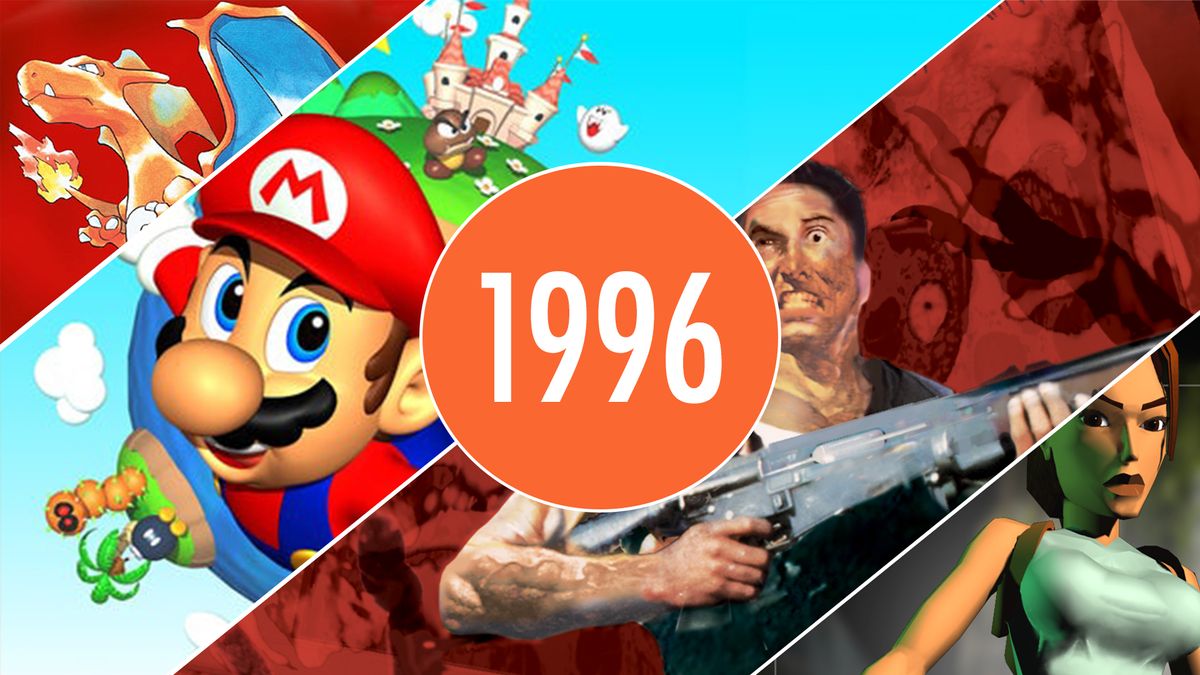.
1995
Casper

(opens in new tab)
The friendly ghost becomes the first CG lead character in a movie, and the first to react realistically with other cast members. The semi-transparent ghoul is on screen for roughly 40 minutes.
Batman Forever/Judge Dredd
Both comic-book film adaptations started the trend of using digital stunt doubles for intense action scenes. A digital Batman was created by Pacific Data Images as a stand-in for the more extreme sequences in Joel Schumacher’s fun bat-flick.
Waterworld
The troubled progeny of the two Kevins (Costner and Reynolds) features the first photorealistic CG water effects. Specifically, shots on board the huge “smokers” oil tanker, where the surrounding ocean is all created using software from Areté Associates.
Babe

(opens in new tab)
Digital trickery was used to manipulate real animals’ mouths so it looks like they’re talking. The animal’s mouths were modelled in 3D and then animated to the actor’s lines. These were then tracked and composited on to the live action footage. The work earned Rhythm & Hues an Oscar for best visual effects,
Toy Story

(opens in new tab)
Pixar arrives big time, with the first ever entirely CG animated movie. The move was made with a budget of $30 million and took a team of just 110 people, including 27 animators. Rendering the 110,064 frames of animation was achieved using 110 Sun workstations, taking 800,000 machine hours. By comparison, today Pixar has two massive, dedicated renderfarms each containing hundreds of multi-core servers running 24 hours a day.
Jumanji

(opens in new tab)
This represented another significant leap in the development of realistic CG fur – this time on some spooky monkeys and a pretty decent-looking lion. The film contains a large number of supposedly photoreal animals of varying quality. There’s also a CG stampede that, oddly, looks less convincing than the dinosaur effects in Jurassic Park two years earlier.
1996
Dragonheart

(opens in new tab)
ILM employed its bespoke CARIcature lip-synching software to bring to life Draco, the talking dragon. The big leap forward here was the range of Draco’s facial animation: the dragon’s voice was provided by Sean Connery and over 200 reference photos were taken of him with different facial expressions. These were then used to help animate Draco, give him character and enhance his virtual “performance”. With lengthy screen times (up to 30 seconds in some scenes), and Draco being main focal point in the shot, the CG had to stand up to audience scrutiny, which makes ILM’s work on the film (including some very complex rotoscoping) all the more impressive.
Twister

(opens in new tab)
ILM employed Wavefront’s Dynamation particle system to bring Jan de Bont’s tornado-chasing spectacular to the big screen – and earned the VFX facility an Oscar nomination. The interactive dynamics software enabled artists to create fully controllable, rotating funnels of particles combined with a special purpose particle renderer. To complete the look, ILM added 2D and 3D clouds to make the sunny live action footage appear stormy.
1997
The Fifth Element

(opens in new tab)
The sprawling cityscapes of New York, created by Digital Domain, seamlessly blend huge 1/24-scale model buildings with digital sets and physical model vehicles with their CG counterparts. One shot consists of 80 elements – doubling the effects facility’s previous record. Under the supervision of Mark Stetson, Digital Domain populated the city with dense air traffic, with a flying police car chase taking place as full CG, after Leeloo plummets into Corben Dallas’ taxi. Digital Domain created 225 VFX shots, which were rendered with Pixar’s RenderMan software.
Star Wars Special Editions

(opens in new tab)
George Lucas used CG to add or amend over 350 shots to his original trilogy, creating a CG Jabba the Hutt for Episode IV and expanding the celebration scenes in Episode VI (though allegedly, according to George himself, the Gungan added to the Jedi finale is not Jar Jar Binks). Fans were horrified when digital trickery made Greedo shoot first in the cantina scene and when it didn’t do anything to stop Darth Vader looking like a potato when his helmet was removed.
Contact

(opens in new tab)
The film opens with what was then the longest ever continuous CG FX shot ever (outside of a full-length animated CG movie that is). Starting with an image of the Earth, the virtual camera pulls back through the solar system and then through the galaxy and into the outer reaches of the universe, until the stars finally vanish into the blackness of the pupil in the eye of a young girl. The girl’s eyes were digitally re-coloured to make them match those of actress Jodie Foster, who plays the same character later on, as an adult.
Spawn

(opens in new tab)
The title character’s flowing cape is an impressive CG creation (about the only thing in the movie that is impressive).
Starship Troopers

(opens in new tab)
The first movie to feature a large scale CG-enhanced military battle – in this case between futuristic soldiers and giant, alien insects. By this time stop-motion animator Phil Tippet had embraced the art of CG creatures and was fast becoming a leading proponent, bringing his knowledge of form and movement to the digital realm.
.
Titanic

(opens in new tab)
The most lucrative film ever made (until kicked into touch by Avatar 12 years later) was also, at the time of its release, the most expensive ever made. Director James Cameron spent the lion’s share of the budget on CG effects and the film cost more to make than the Titanic itself. Motion-captured digital passengers walk the decks of the ship; the engine room is part CG; the sinking scenes are enhanced by computer-generated effects and the realism of CG water took another leap forward.
1998
Godzilla

(opens in new tab)
The stunning and complex CG work by Centropolis Effects (the film features a total of 400 effects shots, with 235 of them featuring a full-CG Godzilla) still can’t redeem Roland Emmerich’s monster movie. Despite some truly impressive scenes of the giant lizard rampaging through a rainy New York (the rain effects actually made the VFX work harder, not easier), and a flawless fly-over of a beached Panamanian ship – yep, the vessel is entirely CG – the film remains a bit of a damp squib.
What Dreams May Come

(opens in new tab)
Scenes of a shifting, painterly afterlife was the result of a collaboration between a number of VFX houses, including Mass.Illusions, Digital Domain, Pacific Ocean Post, Giant Killer Robots, Mobility and Shadowcaster. The beautifully colourful backdrops, that resemble moving impressionist paintings, were created by the use of LIDAR (Light Detection and Ranging) to scan an entire location and recreate it as a “point cloud” in the computer. A process called optical flow was then used to generate the moving scenery. This groundbreaking work earned the movie an Oscar for best visual effects.
Antz

(opens in new tab)
Dreamworks manages to release the second completely CG-animated movie mere weeks before Pixar’s own insect-themed digital ’toon, A Bug’s Life . Antz features a scene with over 10,000 individually-animated characters, and is the first CG animated feature film to include CG water.
Pleasantville

(opens in new tab)
This film boasted the most digital effects shots ever at the time – over 1,700. To be fair, the CG work was just used to combine colour and black and white images, so it wasn’t exactly groundbreaking stuff. Great film, though.
The Prince of Egypt

(opens in new tab)
At $60 million, this was, at the time, the most expensive animated film ever made. Its costly CG effects include a burning bush and the parting of the Red Sea. It also introduced a style of CG shot that has now become a cliché in itself – the camera panning up to reveal a vast city or empire.
Mighty Joe Young

(opens in new tab)
This remake of the 1949 original made another advance in the development of CG hair, fur and feathers, and saw VFX facility Dream Quest team up with ILM. Some shots of the gorilla were CG, while others brought him to life using a Rick Baker-developed robotic ape, or an actor in a suit and forced perspective techniques, to fake the ape’s scale.
1999
The Matrix

(opens in new tab)
The reality-bending Keanu Reeves-starrer turned “bullet time” – slow-mo combined with impossible camera movements – into the effect that every commercial and pop video maker wanted to use. The basic technique is not actually computer-based (it involves a line or circle of still cameras taking still images in rapid succession), but The Matrix employed CG to enhance the effect in stunning ways. By the time the sequels were made, the FX guys had developed a surrogate bullet-time technique that was achieved digitally. Roughly 20 per cent of the original film is made up of special effects, including photoreal digital versions of Neo and Agent Smith, which largely went unnoticed.
The Mummy

(opens in new tab)
Stephen Sommers’ rip-roaring horror yarn, tasked ILM with creating all manner of supernatural effects, from evil dust storms and swarms of locust to the eponymous star himself. ILM created an underlying skeleton and muscle system in Maya, with dozens of animatable controls; movement was driven partly by motion capture and partly by keyframe animation. For the stages of regeneration where you can see through his bones and chest cavity, the creature was layered in texture maps with areas of transparency and chunks of displaced geometry, pushing ILM’s pipeline to the limit. In later scenes, VFX supervisor John Berton added markers to Arnold Vosloo’s face, so he could painstakingly track in digital prosthetics, showing his jaw and teeth behind the shredded skin.
Star Wars Episode I: The Phantom Menace

(opens in new tab)
The Phantom Menace was, at the time, the biggest visual effects project ever undertaken. The film required 35,000 storyboards and 95% of the frames have digital elements. It featured around 2,000 digital FX shots and at least 66 different digital characters, including the first all-CG lead character (the risible Jar-Jar Binks). The 320-shot Podrace, which takes place on the barren landscape of Tatooine, required that ILM spend a year in R&D, working on physics systems for the destruction of the Podracers, plus an Adaptive Terrain Generator, employing a level-of-detail system, just so that its computers could hold the mesh data in memory. Whether you like it or not, Episode I fundamentally changed the way movies were made – pretty much as Episode IV did back in 1977.
Fight Club
A technique called photogrammetry was used to make virtual sets from photos taken of the real sets, which allowed for photorealistic high speed, virtual camera shots that would be impossible to achieve in reality. One of the film’s earliest sequences is made up of over 100 individual still photographs composited together.
Geri’s Game

(opens in new tab)
This little-know Pixar short is notable for its pioneering use of “subdivision surfaces”. This is a technique that uses polygon cages to generate an underlying high-resolution surface that is very smooth and can be displaced at rendertime. Subdivision surfaces are ideal for character animation, and by applying a displacement map, can be imbued with fine surface detail that would be impossible to model by hand – the weave of cloth, for example, or the pores in skin.
A new millennium, and a new standard in digital effects, on the next page…
.
 Game News Video Games Reviews & News
Game News Video Games Reviews & News



